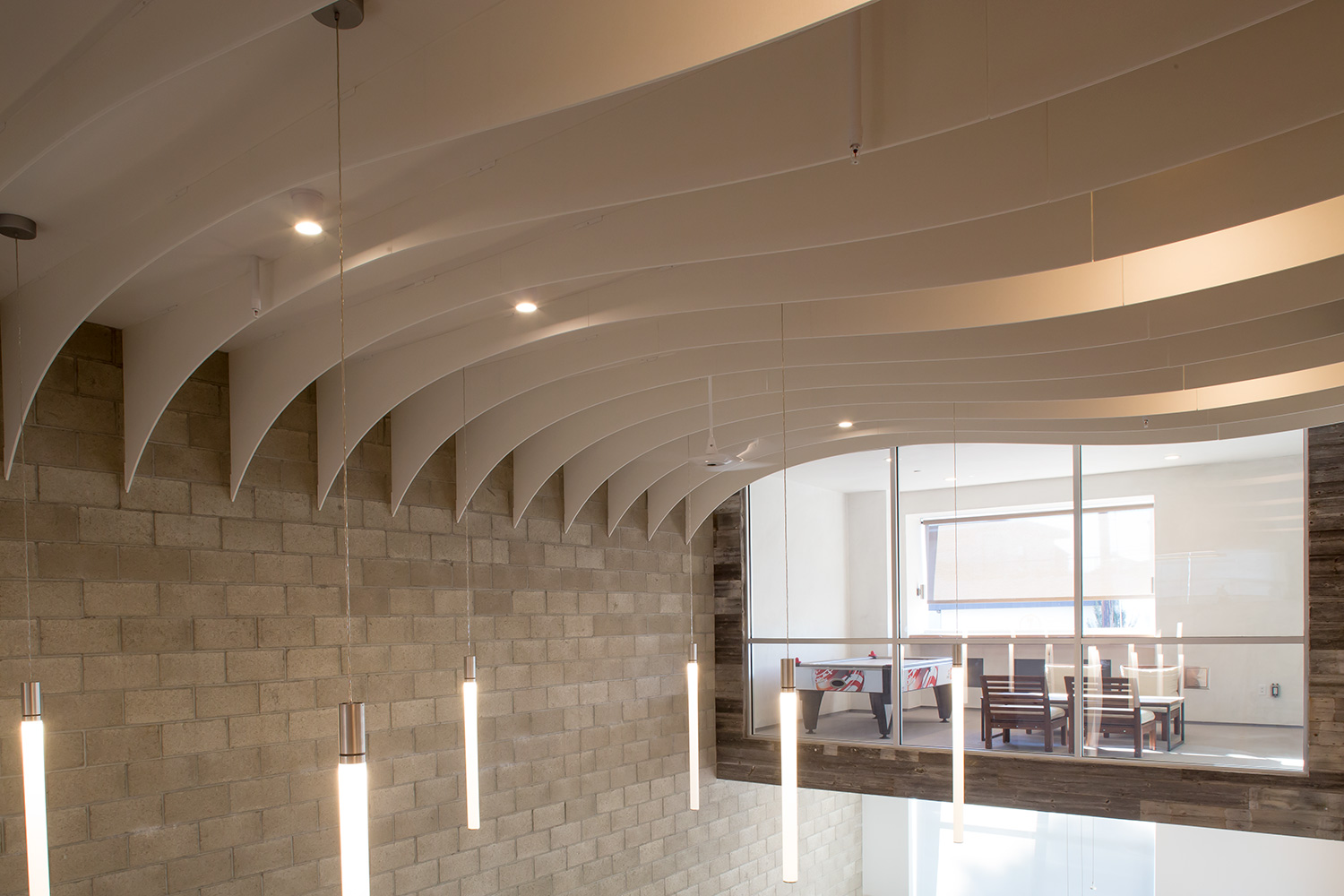Acoustics Design - Creating Soundscapes
Acoustics design refers to the science and art of controlling sound within an environment. It is an important part of architecture and interior design that tries to create the best soundscapes in different places.
Author:George EvansApr 08, 202360 Shares1K Views

Acoustics designrefers to the science and art of controlling sound within an environment. It is a crucial aspect of architectural and interior design that aims to create optimal soundscapes in various spaces.
Acoustics design involves the use of various materials, techniques, and technologies to achieve desired sound qualities and ensure that sound waves behave as intended.
What Is Acoustics Design?
Acoustics design refers to the process of designing spaces and structures with the goal of optimizing sound quality and reducing noise levels.
It involves the application of acoustic principles and techniques to achieve the desired acoustic environment in a space, such as a concert hall, recording studio, or office building.
Acoustics design can also be used to mitigate the impact of external noise sources on the interior of a building.
Proper acoustics design can enhance the listening experience, improve speech intelligibility, and create a more comfortable and productive environment.

Architectural Acoustics & Audio Systems Design: Integrated Acoustic Design for a Recording Studio
Importance Of Acoustics Design
Acoustics design is important for a number of reasons. First and foremost, it can greatly impact the functionality of a space.
Poor acoustics can make it difficult to communicate, negatively affect productivity, and even create safety hazards if alarms or other important sounds cannot be heard.
On the other hand, well-designed acoustics can enhance communication, reduce noise levels, and create a more comfortable environment overall.
Acoustics design is also important for aesthetic reasons. It can enhance the overall atmosphere of a space and create a more pleasant environment. Good acoustics can help to create a sense of intimacy in a concert hall or a sense of calm in a spa, for example.
Additionally, acoustics design is important for sustainability. Good acoustics can help to reduce noise pollution, which can be harmful to both people and the environment.
It can also help to reduce the need for artificial lighting and heating/cooling, as sound-absorbing materials can help to regulate temperature and create a more energy-efficient space.
Acoustics design is important for safety reasons. It can help to prevent noise-related hearing damage, and it can also ensure that important safety alarms and alerts are audible in emergency situations.
Elements Of Acoustics Design
Acoustics design involves several elements that must be considered to create optimal soundscapes. These elements include:
1. Sound Absorption
Sound absorption refers to the ability of a material to reduce the amount of sound that reflects off its surface. Materials with high sound absorption properties, such as fiberglass, acoustic tiles, and draperies, are commonly used in acoustics design to prevent sound reflections and echoes.
2. Sound Reflection
Sound reflection occurs when sound waves bounce off surfaces, leading to echoes and reverberation. Acoustics design aims to control the reflection of sound waves to achieve optimal sound quality and clarity.
3. Sound Transmission
Sound transmission refers to the movement of sound waves through walls, floors, and ceilings. Acoustics design aims to minimize sound transmission through the use of sound barriers such as acoustic insulation, sound-absorbing curtains, and double-glazed windows.
4. Room Shape And Size
The shape and size of a room can significantly affect its acoustics. Rooms with flat walls and high ceilings tend to have longer reverberation times, leading to poor sound quality. Acoustics design aims to create rooms with shapes and sizes that promote optimal sound quality and clarity.
Techniques And Technologies Used In Acoustics Design
Acoustics design involves the use of various techniques and technologies to achieve optimal soundscapes. These include:
1. Sound Masking
Sound masking involves the use of low-level background noise to mask unwanted sounds and create a more pleasant listening environment. It is commonly used in open-plan offices, hospitals, and other public spaces.
2. Acoustic Panels
Acoustic panels are designed to absorb sound waves and prevent reflections and echoes. They are commonly used in concert halls, theaters, and recording studios.
3. Soundproofing
Soundproofing involves the use of materials and techniques to prevent sound transmission between rooms or from outside. It is commonly used in residential settings, music studios, and other places where sound isolation is crucial.
4. Sound Reinforcement
Sound reinforcement involves the use of speakers and other technologies to amplify and distribute sound within a space. It is commonly used in concert halls, theaters, and other large venues.
People Also Ask
How Does Acoustics Design Affect The Sound Quality Of A Space?
Acoustics design plays a critical role in determining the sound quality of a space. The design elements, including the size and shape of the room, the materials used in the construction, and the placement of sound-absorbing materials, can greatly affect the way sound travels and is perceived in the space.
What Are Some Key Considerations For Acoustics Design In Recording Studios?
In recording studios, acoustics design is of utmost importance to achieve high-quality sound recordings. Some key considerations include controlling sound reflections and echoes, managing ambient noise levels, and ensuring the right balance of sound absorption and diffusion. The choice of materials used in the construction of the studio also plays a critical role in acoustics design.
What Is The Role Of Digital Modeling In Acoustics Design?
Digital modeling has become an essential tool in acoustics design, allowing designers to simulate and test different design options before constructing a physical space.
Using software, designers can create 3D models of a space and test how sound behaves within it. This helps to identify potential issues and optimize the acoustics design for better sound quality.
How Does Acoustics Design Impact The User Experience In Public Spaces?
Acoustics design is critical in public spaces such as theaters, concert halls, and lecture halls. Poor acoustics design can lead to a negative user experience, making it difficult for people to hear and understand the spoken word or music.
Effective acoustics design ensures that sound is clear and intelligible, providing a comfortable and enjoyable experience for the user.
What Role Do Architects Play In Acoustics Design?
Architects play a critical role in acoustics design, as the physical design of a space has a direct impact on its acoustics. Architects work with acoustics consultants to design spaces that have the appropriate size and shape, use sound-absorbing materials, and optimize sound reflections and diffusion. They must also consider other factors such as the intended use of the space and the budget for the project.
Final Words
Acoustics design is a crucial aspect of architectural and interior design that aims to create optimal soundscapes in various spaces.
Effective acoustics design can have significant impacts on the quality of life and productivity of people who occupy different spaces.
By considering the various elements of acoustics design and using the right techniques and technologies, designers can create spaces that promote optimal sound quality and clarity.

George Evans
Author
George Anderson, an exceptional architectural designer, envisions and brings to life structures that transcend the realm of imagination. With an unwavering passion for design and an innate eye for detail, George seamlessly blends form and function, creating immersive spaces that inspire awe.
Driven by a deep appreciation for the interplay of space, light, and materials, George's innovative approach redefines the possibilities of architectural design. His visionary compositions leave an indelible mark, evoking a sense of wonder and transforming the built environment.
George Anderson's transformative designs and unwavering dedication continue to shape the architectural landscape, pushing the boundaries of what is possible and inspiring generations to come.
Latest Articles
Popular Articles